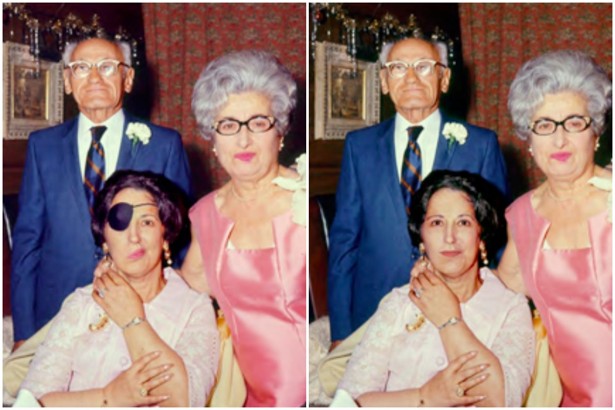
Decades after the fact, I would learn that when I was 11 years old, my mother had been diagnosed with a brain tumor. Specifically, she had an acoustic neuroma, a benign tumor on the nerve connecting her brain and her inner ear.
At the time, though, all I knew was that something was wrong with my mother’s hearing and balance—typically the first symptoms of an acoustic neuroma—and that she needed an operation to fix it.
The first time I saw her new face was a few days after the procedure. I was in the drab green hospital waiting room with my father and sister. A nurse wheeled a woman in—allegedly my mother, but it took a few moments before I recognized her. The physical transformation was incredible.
“Are you doing what grandmother says?” she asked us, laboring to get the words out. It was hard to understand her. As she spoke, half of her mouth refused to move. She smiled at us, half a smile.
Then I noticed her eye. It was clamped shut. It no longer could blink, and eventually it had to be sewn shut.
And so began my family's new normal. For the rest of her life, my mother would live without a functioning right side. Just like a stroke, I would explain to my friends. She was unsteady on her feet and walked cautiously with a cane. My sister and I often had to catch her as she began to a fall. A black eye patch now adorned her face.
When my mother made restaurant reservations over the phone, she’d always ask for a booth, preferring to stay relatively out of sight from the other diners. Almost invariably, the host on the other end of the line would reply, “Yes, we have booze.” We weren't the only ones who had to listen carefully when she spoke.
But these external changes paled in comparison to what was going on inside her. She complained often about feeling like she was in a fog, about not being able to think clearly. A few years after her surgery, she went back to the hospital for follow-up care; I didn’t find out until later that she was actually in a mental hospital, receiving shock therapy for depression.
* * *
My cousin recently sent me some old family slides to scan. Looking through them, I was surprised to see a shot of my mother and her parents, taken at what looks like my grandparents’ anniversary celebration. What surprised me was my mother’s pose: She was looking straight into the camera, an uncharacteristic position for a woman who was ordinarily determined to hide one side of her face. In my Bar Mitzvah photos, she insisted on being seen only in profile.
But there she was in this slide, staring head-on without a hint of vanity, her hand reaching for her father’s. The image was mesmerizing.
As I color-corrected the scanned image and fixed my grandmother's cloudy cataract, it occurred to me: What if I remade Mom’s face the way she would have wanted it? As a photographer, I know how to hide people’s minor imperfections without making the retouching obvious. And so I spent the next few hours performing virtual reconstructive surgery, giving her a new eye and straightening her mouth and nose.

mother showing only the good side of
her face (Jeff Gates)
But when I finished, I couldn’t decide how to feel about my creation. For the second time in my life, I was looking at a woman totally unfamiliar to me. I sent the images to my sister for her opinion. She wrote back right away; she liked Mom’s real photo better. That was who our mother had been.
These days, one of my daughters likes to take selfies over and over, redoing the shot until she gets one that reflects who she wants to be. My other daughter, meanwhile, chastises me when I lightly reduce her laugh lines in the portraits I take of her. Since age 11, I’ve never stopped being part of a family caught between a desire for perfection and a loyalty to reality.
I studied the slide of my mother again. The original image was more precise than my decades-old recollection. Looking at it, I recalled with fresh clarity how contorted her mouth was, the way the cleft under her nose shifted way to the left. I also saw a detail I’d missed during my editing process: With the good side of her mouth, she was smiling. The photo was an evocative reminder of that time in my life, bringing back memories both difficult and loving.